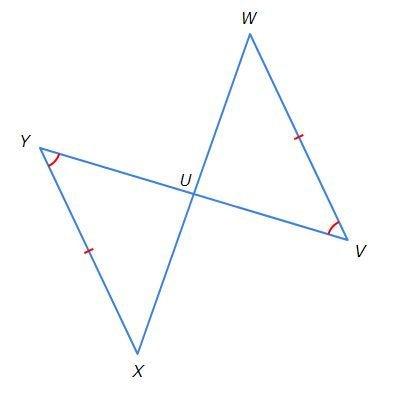WILL VENMO
Step 1 : Choose ONE of the following triangles and graph below:
1. Obtuse Scalene...

Mathematics, 16.10.2020 16:01 dlasheab
WILL VENMO
Step 1 : Choose ONE of the following triangles and graph below:
1. Obtuse Scalene Triangle Translation to prove SSS Congruence
or
2. Isosceles Right Triangle Reflection to prove ASA Congruence
or
3. Equilateral Equiangular Triangle Rotation to prove SAS Congruence
Original Coordinate Point Transformation Rule Image Coordinate Points
Step 2: Graph both triangles below
Step 3: Show Congruency
***Only complete the work for the type of triangle you chose in step 1***
• If you chose Obtuse Scalene Triangle Translation to prove SSS Congruence, You must show all work with the distance formula and each corresponding pair of sides to receive full credit.
• If you chose Isosceles Right Triangle Reflection to prove ASA Congruence,. You can use the distance formula to show congruency for the sides. To show an angle is congruent to a corresponding angle, use your compass and straightedge. (Hint: Remember when you learned how to copy an angle?) You must show all work with the distance formula for the corresponding pair of sides and your work for the corresponding angles to receive full credit.
Measurement from Pre-Image Corresponding measurement from Image
• If you chose Equilateral Equiangular Triangle Rotation to prove SAS Congruence, use the coordinates of your rotation to show that the two triangles are congruent by the SAS postulate. You can use the distance formula to show congruency for the sides, use your compass and straightedge. (Hint: Remember when you learned how to copy an angle?) You must show all work with the distance formula for the corresponding pair of sides and your work for the corresponding angles to receive full credit.
Step 4: Reflections:
***Only answer the group of questions for the type of triangle you chose in step 1***
Group 1 -Obtuse Scalene Triangle Translation to prove SSS Congruence
1. Describe the translation you performed on the original triangle. Use details and coordinates to explain how the figure was transformed, including the translation rule you applied to your triangle.
2. What other properties exist in your triangle? Discuss at least two theorems you learned about in this module that apply to your triangle. Make sure to show evidence by discussing your triangle's measurements.
3. Did your triangle undergo rigid motion? Explain why.
Group2- Isosceles Right Triangle Reflection to prove ASA Congruence
1. Answer the following questions:
A. What line of reflection did you choose for your transformation?
B. How are you sure that each point was reflected across this line?
C. What reflection rule did you apply to your triangle?
2. What other properties exist in your triangle? Discuss at least two theorems you learned about in this module that apply to your triangle. Make sure to show evidence by discussing your triangle's measurements.
3. Did your triangle undergo rigid motion? Explain why.
Group 3- Equilateral Equiangular Triangle Rotation to prove SAS Congruence
1. Answer the following questions:
A. How many degrees did you rotate your triangle?
B. In which direction (clockwise, counterclockwise) did it move?
C. What rotation rule did you apply to your triangle?
2. What other properties exist in your triangle? Discuss at least two theorems you learned about in this module that apply to your triangle. Make sure to show evidence by discussing your triangle's measurements.
3. Did your triangle undergo rigid motion? Explain why.

Answers: 1


Another question on Mathematics


Mathematics, 21.06.2019 18:40
Valentina is subtracting from . she finds the lcd to be 15y2. what is valentina's next step?
Answers: 2

Mathematics, 21.06.2019 19:30
Abird on top of a 200 ft bridge tower sees a man standing on the lower part of the bridge (which is 50 ft above the ground). the angle of depression from the bird is 26 ̊. how far is the man from the base of the bridge tower? with explanation and pictures .
Answers: 1

Mathematics, 21.06.2019 20:50
What is the greatest number of parts of a circle that can be formed by cutting the circle with 7 straight cuts? (note: the parts do not have to be equal in size)
Answers: 3
You know the right answer?
Questions


Mathematics, 18.01.2020 03:31


History, 18.01.2020 03:31

History, 18.01.2020 03:31


Mathematics, 18.01.2020 03:31


Health, 18.01.2020 03:31




History, 18.01.2020 03:31

Chemistry, 18.01.2020 03:31

English, 18.01.2020 03:31


Mathematics, 18.01.2020 03:31

Mathematics, 18.01.2020 03:31





